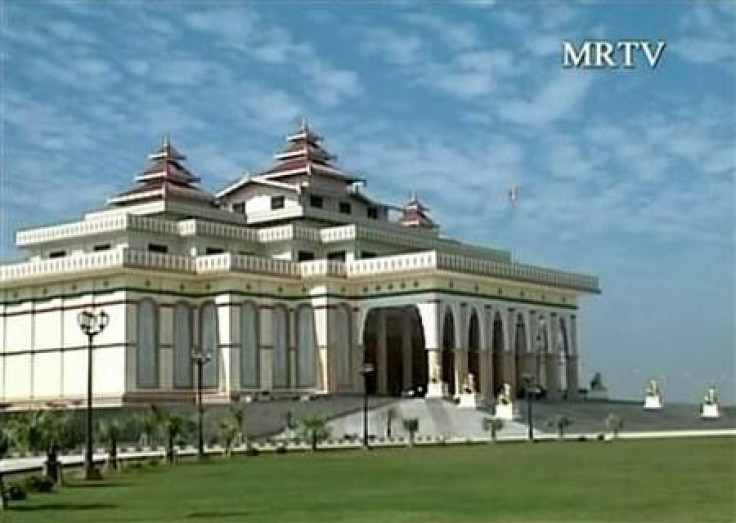In Myanmar's gleaming new capital, uncertain promise

Its name translates as Abode of Kings, but it is far from clear whether Myanmar's new capital and its gleaming new parliamentary complex can return the reclusive state to its former glory.
Bestowed with manicured, heavily watered lawns and forbidding stone walls, Myanmar's five-year-old capital, Naypyitaw, bears no resemblance to the rest of the country, one of Asia's poorest, or to nearby villages of mostly thatched wooden huts.
But as an elected parliament convened in Myanmar this week for the first time in half a century, the capital and its newly minted lawmakers are considered by some a tentative step towards opening a country that just 50 years ago was one of Southeast Asia's most promising and wealthiest.
Once the world's biggest rice exporter and a major energy producer, the former British colony is known now as a pariah state with a dysfunctional economy and an estimated 2,200 political activists or opposition politicians behind bars.
Whether it will ever shake that image is a matter of intense diplomatic debate, but a walk around the streets of the new capital suggests its rulers are thinking big.
The sprawling city with its two new Hluttaws, or legislative chambers, was built from scratch just five years ago, allowing the reclusive military rulers of the former Burma to isolate themselves some 320 km (200 miles) from the largest city and former capital, Yangon.
Naypyitaw is a maze of ministry buildings, government mansions, civil servants' quarters and presidential palaces complete with grand Roman-style pillars -- all rising from dusty, arid scrubland. At its heart is the parliamentary complex's 31 buildings, with pagoda-style roofs.
PUZZLINGLY WIDE ROADS
Attractions include five golf courses, seven resort-style hotels, drinkable tap water, a Western-style shopping mall, a large zoo, a sprawling water fountain garden, lavish mansions and 24-hour electricity in a nation beset by power outages.
Restaurant and shop owners told Reuters business had improved as more labourers arrived in the city for its myriad construction projects.
Much of the work has been carried out by workers toiling in searing heat without modern equipment.
A year ago, as construction of parliament was at full steam, Reuters journalists witnessed women hauling stacks of bricks balanced upon their head at one construction site, while men cleared land with wooden-handled scythes at another.
Ox-drawn carts transported wood.
The government declines to disclose Naypyitaw's cost but analysts and diplomatic sources say it must have cost billions of dollars, drawing criticism from aid groups over the priorities of a country facing chronic poverty and crumbling infrastructure.
Its rise reflects the strengthening diplomatic and financial muscle of Myanmar's rulers as Southeast Asia and China tap its rich natural resources, from timber and natural gas to precious Burmese gems, despite Western sanctions imposed in response to rights abuses.
Despite its array of amenities, there's no lively city centre thronged with people, even five years after the government moved nearly all its workers there. Officials put its population at about 1 million, but that includes surrounding townships.
Its roads are puzzlingly wide, including one 20-lane boulevard, but they are largely empty. Civilian cars are rare. The city centre, a roundabout where five roads meet, is populated mostly by palm trees and potted flowers.
One person the authorities are surely happy to leave in Yangon is opposition leader Aung San Suu Kyi, a Nobel laureate freed from detention following Myanmar's first election in two decades in November.
Suu Kyi has yet to visit Naypyitaw and it is unclear when she will. On Friday a special appeals court rejected her attempt to reinstate her political party after it was dissolved for boycotting last year's election.
© Copyright Thomson Reuters 2024. All rights reserved.











